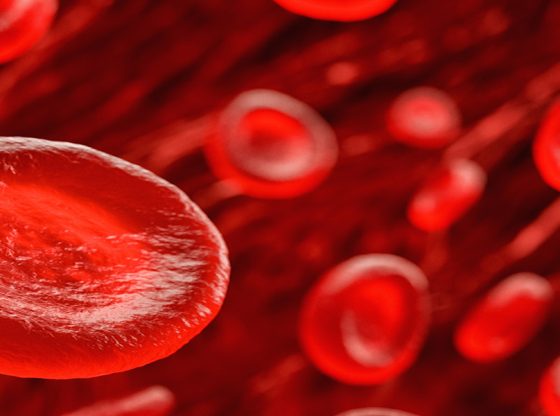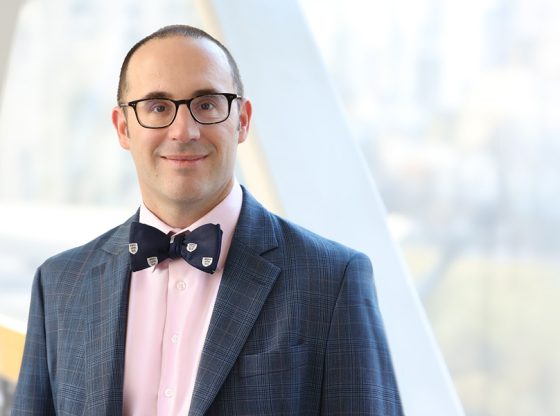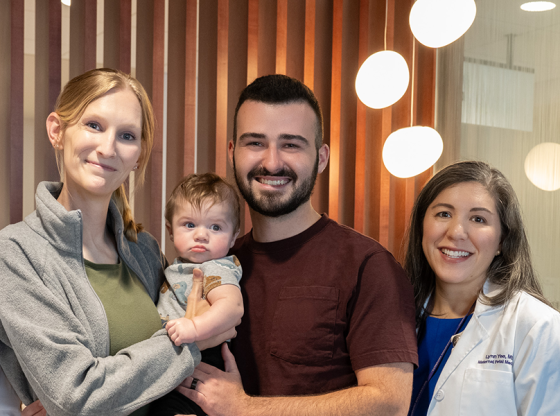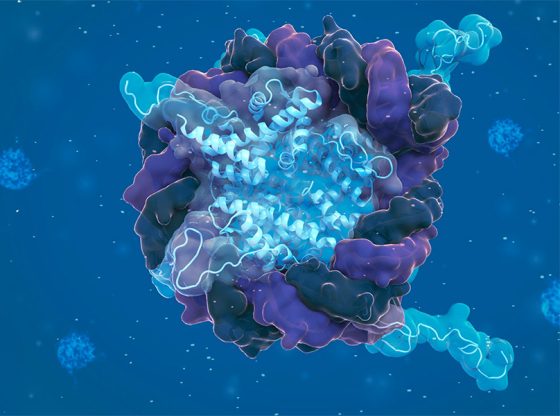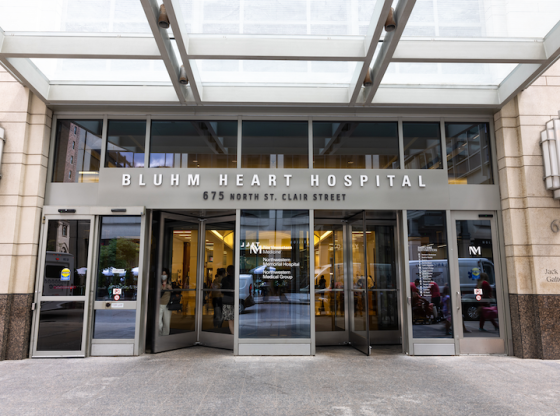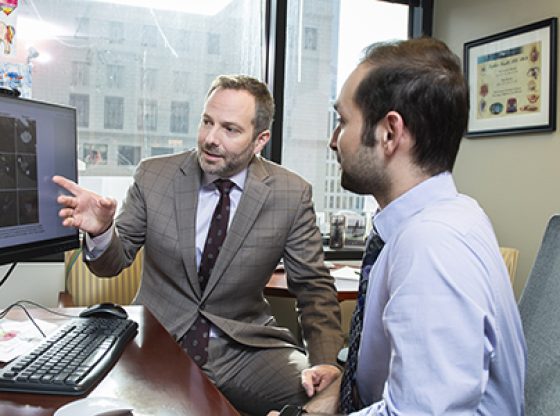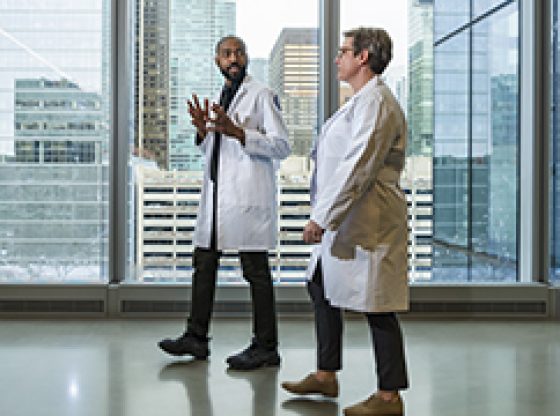10,000 Transplants and Counting: Ushering in a New Era in Transplantation
Northwestern physicians mark a milestone in transplantation as they reach their 10,000th transabdominal transplant surgery.
By Olivia Dimmer

When the anesthesia mask went over Joe Tkac’s face in the operating room, he cried.
But he wasn’t scared, he says — they were tears of joy.
“It was joy. Like, ‘I can’t believe this is finally happening,’” the 23-year-old says of his kidney-pancreas transplant at Northwestern Memorial Hospital in December 2023. “I had all my faith in the doctors, and I was just like, ‘This is gonna work out. It’s all good.’”
Tkac’s transplant marks a monumental milestone for the Organ Transplant Center at Northwestern Memorial Hospital as it is the 10,000th completed abdominal organ transplant surgery performed at the hospital.
“It’s been a few months out since my surgery, and it hasn’t hit me a hundred percent,” Tkac says. “The best way I can describe it is just surreal, really. It was a surreal emotional rollercoaster.” Born a month premature with kidney dysplasia, Tkac had undergone two kidney transplants already. After side effects from medication left him diabetic, Tkac had hoped that a kidney-pancreas transplant would free him from the dialysis and insulin injections that had quickly taken over his life.
After getting his hopes up on three separate occasions when organs became available but ultimately ended up not being a good match for him, Tkac wasn’t sure it was going to happen this time around. But then it did, and now he is one of the 10,000 abdominal transplant recipients who have been treated at Northwestern Memorial Hospital since the hospital started providing transplant services in 1964.
With its commitment to advancing transplantation science, what started as a relatively small program in the ’60s has grown to be one of the largest in the country, and with the establishment of projects like community-based outreach programs to encourage organ donation, the hospital’s organ transplant program is positioned for even more growth.
“This was a small kidney program until the 1990s, and then it grew to become one of the most comprehensive multi-organ abdominal transplant programs in the country. You don’t get to that number of patients without taking on challenging cases, being innovative, and developing new techniques and therapies,” says Joseph Leventhal, MD, PhD, the Fowler McCormick Professor of Surgery in the Division of Organ Transplantation and former interim chief of Organ Transplantation in the Department of Surgery.
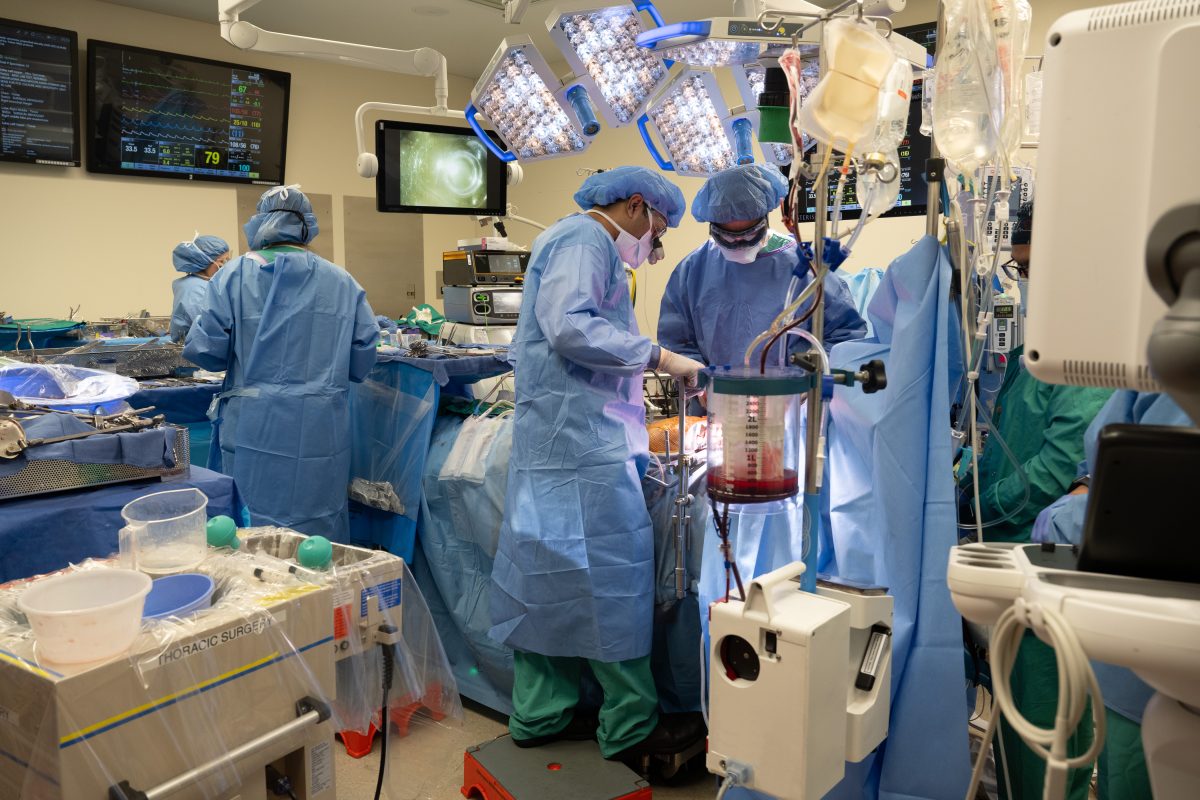
The 10,000th abdominal organ transplant milestone follows a record-breaking year of abdominal transplants at the Organ Transplantation Center, totaling 518 kidney, liver, and pancreas transplants in 2023. Founded in 1964, the Organ Transplant Center is one of the largest and longest running in Illinois. (Photo credit: Teresa Crawford)
A TRANSPLANT RENAISSANCE
According to 2023 data from the United Network for Organ Sharing, Northwestern Medicine’s organ transplant program is seventh in the U.S. for the highest number of kidney transplants performed and third for kidney/pancreas transplants.
“We’re really in a renaissance of transplant right now. It’s exciting to see where transplantation was, and more importantly, where it is going,” says Satish Nadig, MD, PhD, director of the Comprehensive Transplant Center (CTC) at Northwestern University Feinberg School of Medicine, chief of Organ Transplantation in the Department of Surgery, Edward G. Elcock Professor of Surgical Research, and professor of Microbiology-Immunology and Pediatrics. “The fact that we’ve hit 10,000 not only allows us the opportunity to say we’ve saved more lives than many transplant programs in the country, but also gives us the experience to be on the forefront of the next era of transplant science.”
Following a series of pivotal hires in the ’90s, the Organ Transplant Center paved the way for the program to grow, says Leventhal, who has been with the center since then.
With more surgeons, the program then added an important research arm: the CTC. Founded in 2009, the center aims to accelerate research around organ transplantation and other care for end-stage organ disease.
Nadig, who directs the center, says the organ transplant program has benefitted from early adoption of technological advancements such as machine profusion for livers, a technique in which a machine helps preserve a liver outside of the body for up to 24 hours.
Northwestern’s approach also helped to identify biomarkers for detecting organ rejection and the use of tolerance induction strategies to help patients off anti-rejection medications, Nadig says.
In the near future, Nadig and his colleagues have their sights on applying robotics and nano therapeutics to transplantation.
“We are on the forefront, and that is not only recognized internally, it’s recognized and externally validated by our program having more NIH (National Institutes of Health) funding than the large majority of programs across the country,” Nadig asserts. “We are the second highest in research funding amongst the five largest volume programs in the country. Not only are we doing a lot of transplants, we’re investing in how we do it differently.”
The hospital’s transplant program was the first in the U.S. to utilize laparoscopic surgery in living donor kidney transplant surgery and the first to utilize novel induction antibodies to help wean patients off steroids, Leventhal adds.
“As we embrace novel techniques in transplantation such as robotics and developing new cellular therapies and nano therapeutics, we look forward to continuing our legacy of being the place where important bench-to-bedside translations take place,” Leventhal says.
The fact that we’ve hit 10,000 not only allows us the opportunity to say we’ve saved more lives than many transplant programs in the country, but also gives us the experience to be on the forefront of the next era of transplant science.
Satish Nadig, MD, PhD
In addition to scientific advances, the program also aims to make a cultural impact. With the launch of the Northwestern Medicine Hispanic Transplant Program, the first of its kind in the country, Spanish speakers have dedicated bilingual, culturally competent care teams to help in their transplant journey.
In 2019, the hospital founded the African American Transplant Access Program, led by Dinee C. Simpson, MD, associate professor of Surgery in the Division of Organ Transplantation and the first Black transplant surgeon in Illinois. The African American Transplant Access Program aims to address distrust in the healthcare system and boost health literacy — two important issues that can drastically affect patient outcomes.
According to Leventhal and Nadig, more innovations are en route with the utilization of ex vivo organ conditioning. By using machinery to improve the health of organs outside the body, clinicians may be able to match more patients with organs or even rehabilitate a person’s own organ.
“We’re not just keeping up, we’re leading the charge,” Leventhal says. “We are actively pursuing extramural funding, philanthropic funding, and research initiatives to routinely question the status quo. So much of what allows us to get into the next era of transplant is of our own doing and creating those opportunities.”

PATIENTS MAKING AN IMPACT
Brad Szczecinski landed in the emergency department a day after he helped his volleyball team win a tournament. Following the victory, Szczecinski started having vision problems. After visiting with a few physicians, he was given the diagnosis: end-stage renal disease.
“I was in denial about it,” Szczecinski says. “I reached out to other medical providers to see if there was a solution or a workaround, but a few months later I found myself having to go on dialysis.”
His kidney function and eyesight worsened, and Szczecinski dropped 60 pounds in under a year. When a new acquaintance from church offered to be his kidney donor and was found to be a match, Szczecinski knew he couldn’t wait any longer and that transplant surgery was inevitable.
That experience stayed with Szczecinski his whole life, he says, along with his friendship with his organ donor. Now, Szczecinski is part of Transplant Village, a group of organ recipients, donors, and their families who have had experiences with Northwestern Medicine’s Comprehensive Transplant Center and now volunteer their time to support the center and its research.
Szczecinski and his fellow Transplant Village volunteers worked alongside the Northwestern Memorial Foundation to fundraise for research and expanded care access. The endowment now sits near $15 million thanks to their combined efforts.
“If I can help another patient or provide them and their families some hope, I do that,” Szczecinski says. “I also talk to folks about becoming a donor, either putting it on your driver’s license for when you pass away or donating a kidney or part of your liver to save someone’s life. We all have the ability to do that or potentially start an organ donation chain that saves multiple lives.”
The hospital couldn’t have reached 10,000 successful surgeries without the support of communities and patients like Szczecinski, Nadig says.
“We don’t survive as a medical field unless folks are organ donors either in life or in passing. We are much more engaged with the community than many medical fields out there because we’re reliant on the community in order to offer organ transplants,” Nadig says. “Community engagement is extremely important for us, not only to hit this milestone, but also to hit the next 10,000.”


